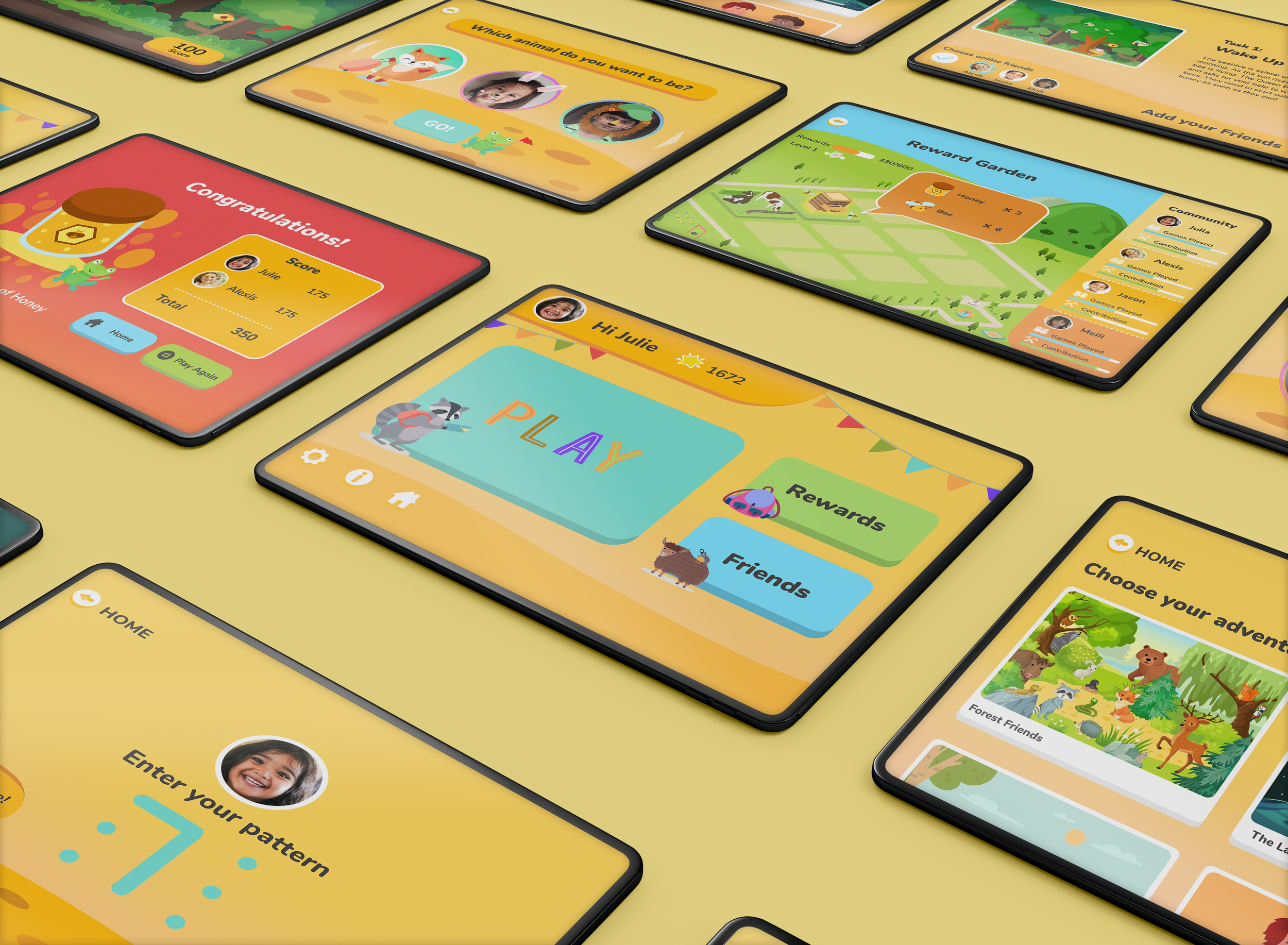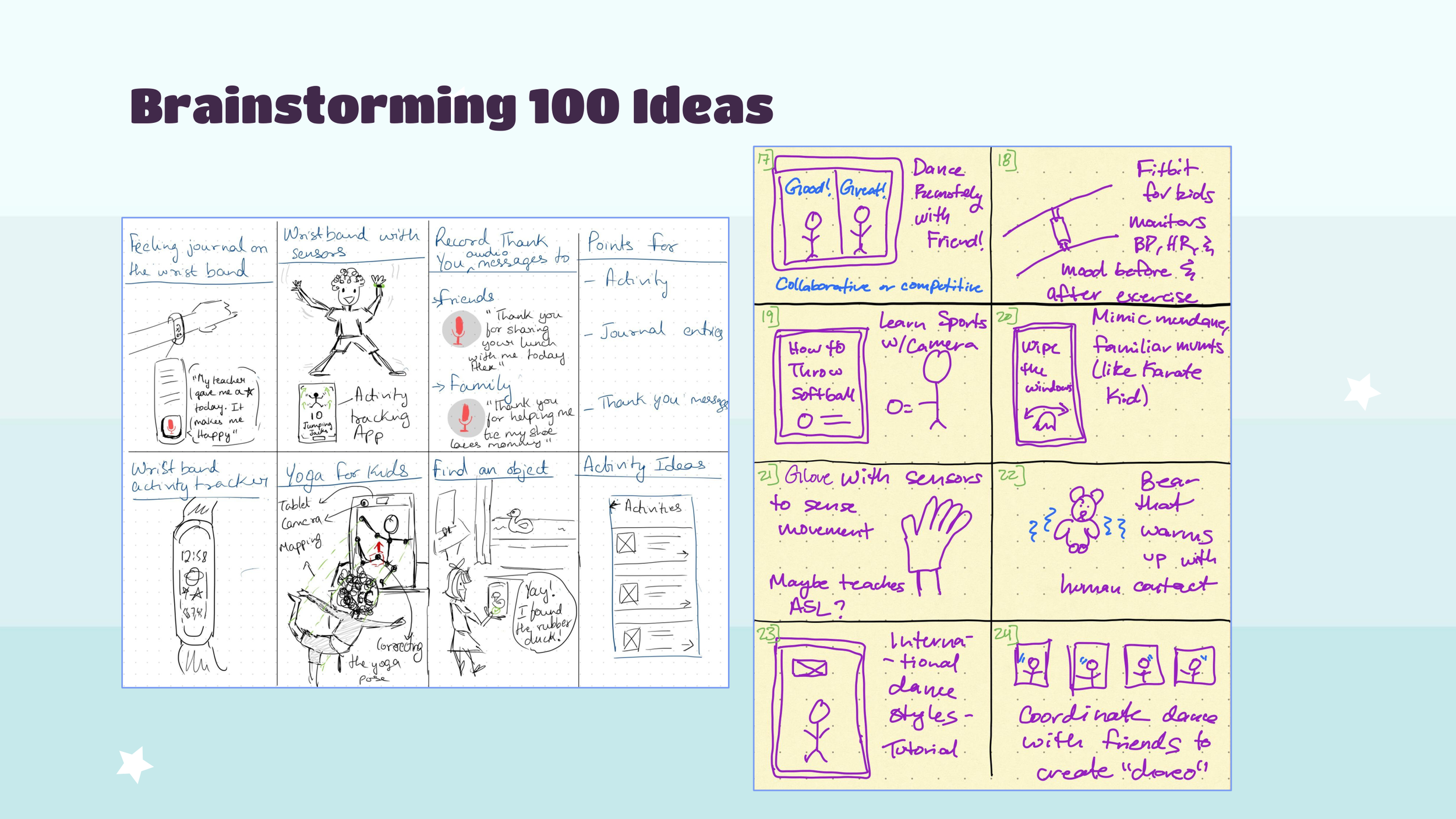
Shine Tablet App
An interactive AR storytelling and social games app for children during the pandemic.
Course: Introduction to Interaction Design (SI 582)
University of Michigan, Master of Science in Information
Design Process
-
Before the pandemic, ⅓ of kids in US reported clinically meaningful symptoms of depression, anxiety, or behavioral problems. During the pandemic, this number doubled to ⅔ of kids.
The global pandemic significantly limits children’s ability to connect with their friends face-to-face, leading to isolation and the lack of opportunities to learn social and emotional skills.
Children during this time are also more prone to mental health issues.
Parents are stretched very thin, further increasing their difficulties to help their children socialize and feel fulfilled.
-
Children crave connections with people outside of their household.
Interviews with children included asking them to draw a happy moment
These pictures show that they value their connections with others, especially peers
The pandemic hurt the social and emotional development of young children.
Interviews with parents show they want to develop their children’s social & emotional skills
Pandemic did not allow opportunities for children to practice these skills, as many children had to attend school online
Parents want their kids to be engaged in physical or hands-on activities.
Pandemic forced many extra-curricular activities to be cancelled
Children did not have events to keep them active and would mainly stay in their home
-
Brainstorming 100 ideas
Amongst our groupmates, we drew out 100+ ideas on addressing gaps found in our research
After sharing, we grouped these ideas by similarity and which category they satisfy (social interactions, physical activity, etc.)
Storyboards for multiple scenarios
We explored two main scenarios to understand the varied needs of the target audience
We looked at Alex, a 12-year-old girl that wants to be active with her friends, and Aasik, an immigrant child looking to connect with peers
Technology
Based on these ideas, we explored technologies that are easy-to-understand for children as well as affordable for parents
We landed on augmented reality based on a tablet’s camera, as many families own a tablet for their children to use
-
In order to prioritize features most important to the user, we conducted various types of user testing and further research.
We utilized ICO’s to better understand how to design for children based on age. We chose our age groups between 6 and 10 years old to understand their cognitive needs.
We conducted guerilla user testing for our paper prototype by recruiting families at the Kerrytown Farmers Market on Halloween. From this, we understood what got children excited (music and movement) and what confused children (written instructions).
Finally we conducted usability tests with children aged 6-10 years old to gain insights from our digital prototypes. From this, we learned to prioritize regularly-used buttons by increasing their size and highlighting with bright colors.
Main features include:
Dance game that teaches children kindness and friendship through story
Face filters for children to protect their identity and add fun to their gameplay
Reward garden where children unlock achievement stickers and create a community garden of rewards with their peers
Parent/caregiver profile that allows them to track their child’s activity progress and make decisions about privacy
-
Designing for children needs to include their cognitive abilities and social needs.
Securing children’s privacy and identity through face filters and parental guidance.
Empathizing with children and parents to understand their needs during the pandemic.
Technology
Figma
Miro
Photoshop
Premiere Pro
Paper Prototype
Digital Prototype
Poster
UX@UM is a 2-day conference connecting design innovators with industry experts through user experience papers, posters, tutorial sessions, and roundtables. The conference is a platform for all graduate students to create and share their products and designs and research in the area of UX.
Our team shared our design challenges and experiences with developing technology for children.




























